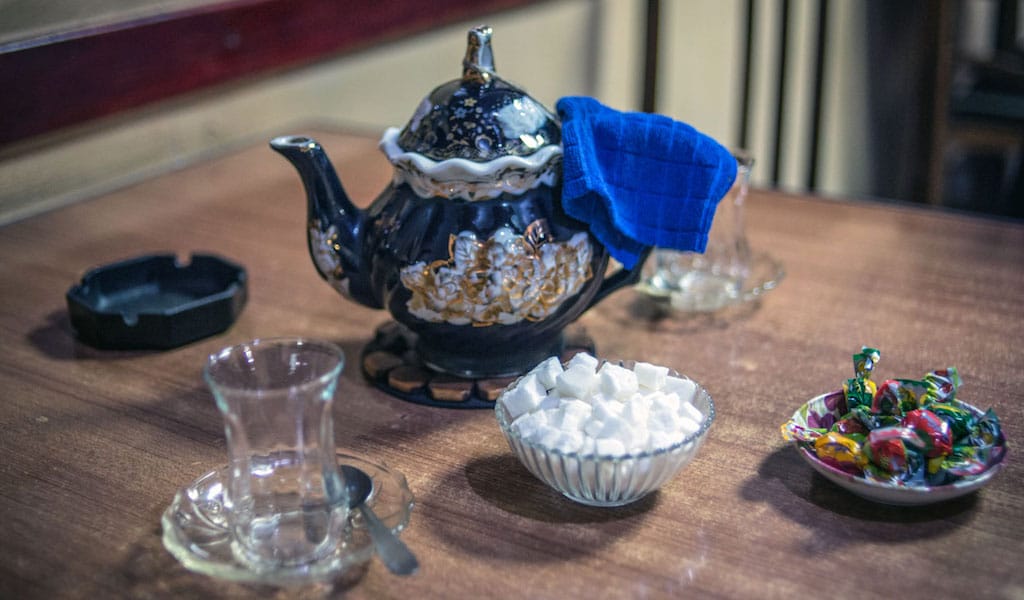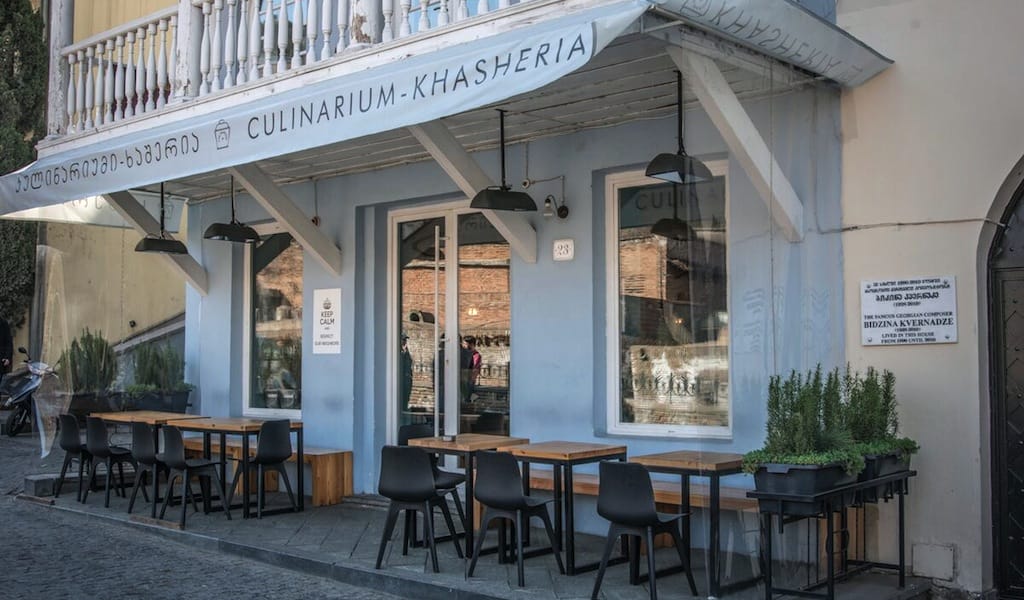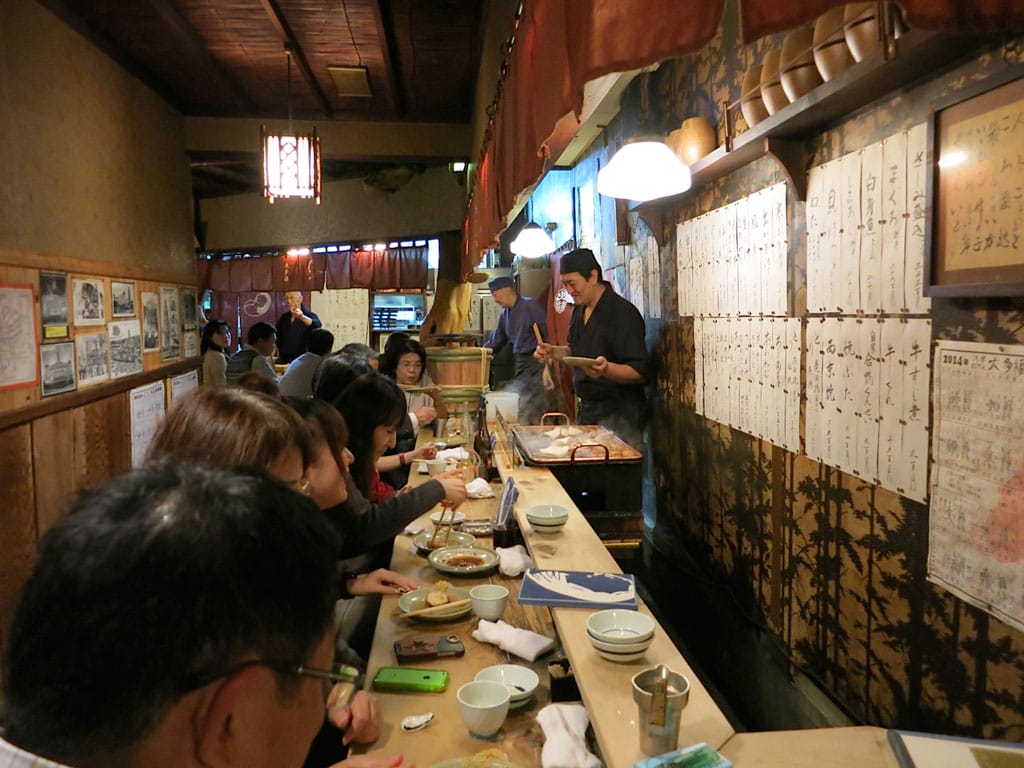Before gentrification, Tbilisi’s ancient bath district of Abanotubani was a collage of dome-roofed sulfur baths and carpet shops, claustrophobic grocery stores and teahouses packed inside crooked multi-storied brick buildings with condemnable wooden balconies, a sneeze away from collapse.
Yet this quarter is the nucleus of Tbilisi, the site of its founding and from where the multicultural city grew to become a key hub along the Silk Road. Today it is home to a tight, multiethnic community of mostly Azeris, who have lived here for generations. Directly above the baths is the 120-year-old Jumah Mosque, renowned for being a place of worship for both Shia and Sunni Muslims.
In 2005, the city prepared itself for the arrival of then U.S. President George W. Bush by slapping a coat of paint on every facade between the airport and the Marriott in the center of town. Abanotubani got a bit more of a tune-up, as it would be the scene of a marvelous national dance presentation, during which Bush was so overwhelmed he famously wiggled his tush on stage too.

Renovations continued after the visit with the old structures being pulled down and replaced with cinderblock and reinforced concrete replicas, much to the chagrin of preservationists. Restaurants, cafés and souvenir shops displaced many of the mom-and-pop establishments; the teahouses – chaikhanas – that were a common sight in the neighborhood almost vanished altogether.
“In this part of the district there were four or five,” says 60-year-old Sabir Abasov, owner of Tbilisi’s last chaikana, which he opened ten years ago in a smoky, incognito cellar on an Abanotubani side street.
A professional jeweler during Communism, Sabir got a gig managing Tbilisi’s oldest bathhouse, the 290-year-old Bath Number 5, after the collapse. He also worked at the chaikhana located next door. When that closed, the clients, who had become his friends, urged him to open his own, as they no longer had a place to hangout.
Although a TV and random yesteryear pictures of the neighborhood on the wall add a bit of hominess to the basement, a space that Sabir got from his father-in-law, the chaikhana still feels more like a private clubhouse than a public enterprise. It’s three o’clock in the afternoon, and six men are sitting around a table in a corner slapping dominoes down, speaking a blend of Georgian, Russian and Azerbaijani and drinking tea made the old-fashioned way, from loose leafs steeped in hot water to create a potent brew.
“He’s Jewish, that one’s Yezid, he’s Armenian and he’s Azeri,” Sabir announces. “All nations mixed together in one building, that’s our neighborhood.”
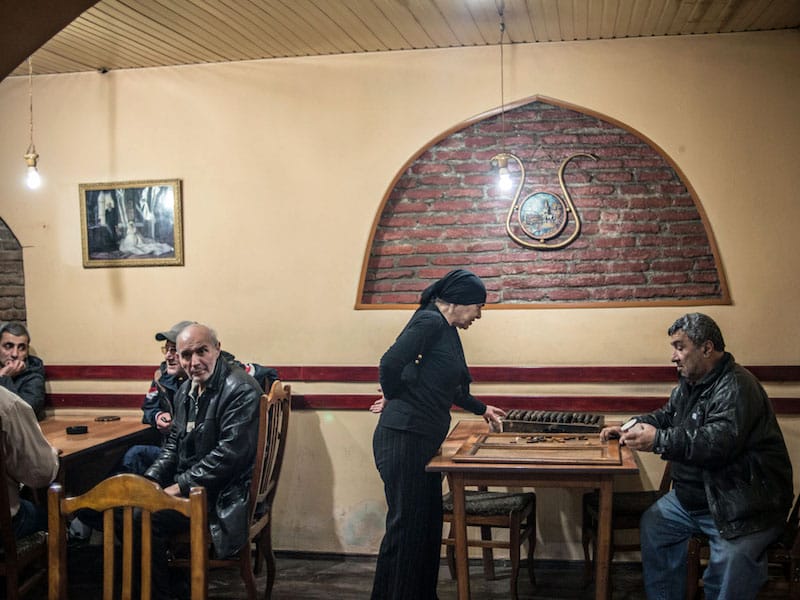
Robert, a sexagenarian from the hood, tells us he remembers the chaikhana being a place where men gather together to talk about “work and life and everything else.” It’s like the neighborhood pub without the alcohol. Sabir adds that there are no more places like this because the neighborhood is changing and young people go elsewhere, as there are now a greater variety of cafes in Tbilisi. But none of these men fear the institution will die.
“We are keeping this tradition and passing it on,” Robert insists and adds that there are many chaikhanas in Marneuli, a region southeast of Tbilisi predominately populated by Azeris. “But in Tbilisi this is the last,” he stresses.
“This is real tea!” His friend Roman interjects. “There are new teahouses in Tbilisi, but they give you tea in little paper bags.” His friends shake their heads and frown in agreement.
“Once in a while they bring some meat and roast it in the fireplace.”
Sabir says when he opened the chaikhana, he tried lots of different teas and settled on loose leaf Mariami tea, a Ceylon that the clients like. He wanted to use a traditional charcoal- or wood-heated samovar, but it was impossible to do so in the cellar as there is no ventilation.
No food, coffee or soft drinks are served here, only tea, sugar and lemon. For sugar, he gets fine-grained bricks he cuts into little chunks with an antique sugar breaker he is eager to show us. “Store cubes aren’t real sugar. It’s refined and diluted,” he avows.

Sofia Khoshbegyan, in all black, including a headscarf, is an Armenian woman who has been working here for two years. She sets a pot of tea on our table with a dish of sugar bits. Although a chaikhana is typically a male hangout, women occasionally drop by too, she says.
But today it’s all men. One is an old Azeri singer we are told was once popular on the wedding circuit. Another sits down and opens up a backgammon board and waits to be joined by a challenger. “Locals might come and sit all day and drink two glasses of tea, especially in winter. Once in a while they bring some meat and roast it in the fireplace,” Sabir says.
Tourists drop in sometimes and probably would more often if there was a sign. Sabir admits it would be a good idea to put one up “one of these days,” but clearly he is in no hurry. This has been a nameless hangout for ten years.
We get up to leave but Sabir won’t let us pay. We argue that we want to support an old tradition, but he snaps back, “Part of old traditions is that you don’t have to pay.” Sofia nods her head in agreement. “You are our guests,” he says.
 July 3, 2017 Culinarium-Khasheria
July 3, 2017 Culinarium-Khasheria
For 2,000 years, people have flocked to the Abanotubani baths, whose hot sulfuric waters […] Posted in Tbilisi April 1, 2024 Pastiera
April 1, 2024 Pastiera
Like the Proustian madeleine, sweets can stir up all kinds of feelings in the minds of […] Posted in Naples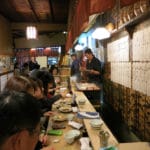 January 15, 2024 Otafuku
January 15, 2024 Otafuku
The weather is turning cold and Japan’s convenience stores, or konbini, have hauled out […] Posted in Tokyo
Published on November 28, 2017
Related stories
July 3, 2017
TbilisiFor 2,000 years, people have flocked to the Abanotubani baths, whose hot sulfuric waters have long been fabled to possess magical healing qualities. The Persian king Agha Mohammad Khan soaked there in 1795, hoping to reverse the effects of the castration he suffered as a child. He dried off, found his conditioned unchanged and razed…
April 1, 2024
NaplesLike the Proustian madeleine, sweets can stir up all kinds of feelings in the minds of those who eat them. In Naples, struffoli (small, round doughnuts glazed with honey) and cassata (sponge cake with ricotta and candied fruit) speak of Christmas, while chiacchiere (sugar-dusted fritters) and sanguinaccio (literally “blood pudding,” but actually made of chocolate)…
January 15, 2024
TokyoThe weather is turning cold and Japan’s convenience stores, or konbini, have hauled out the oden service pans and positioned them next to the cashier counters. For those not familiar with oden, the sight of assorted flotsam and jetsam afloat in a clear broth and the fishy aroma impinging on their space while paying for…







































